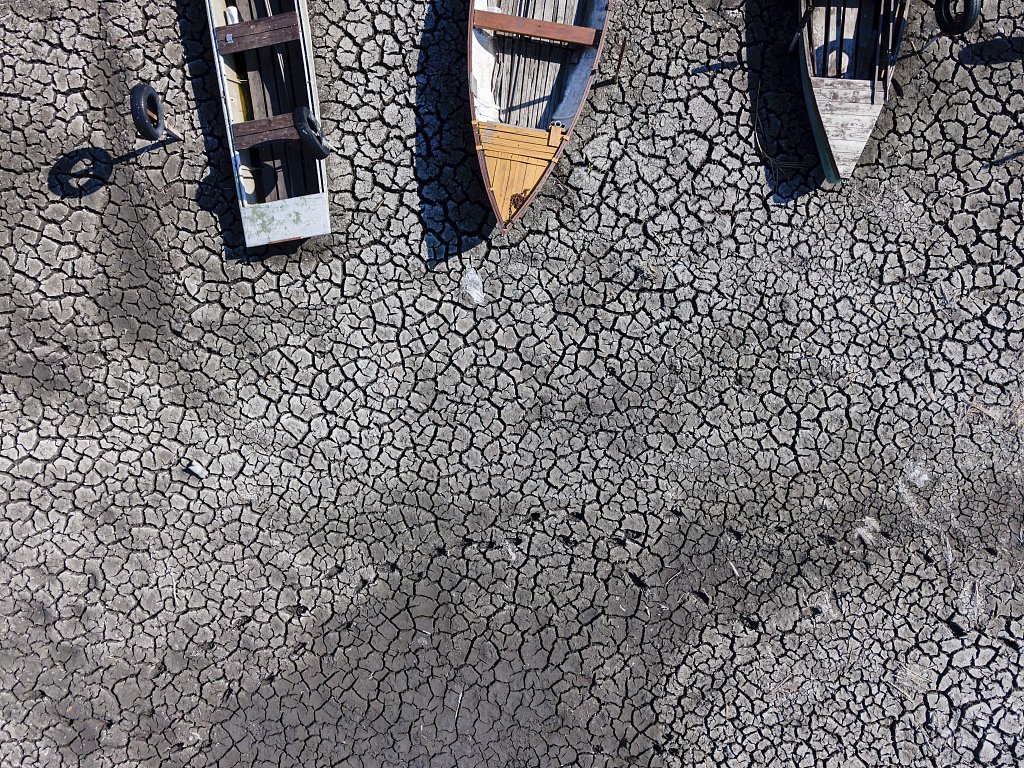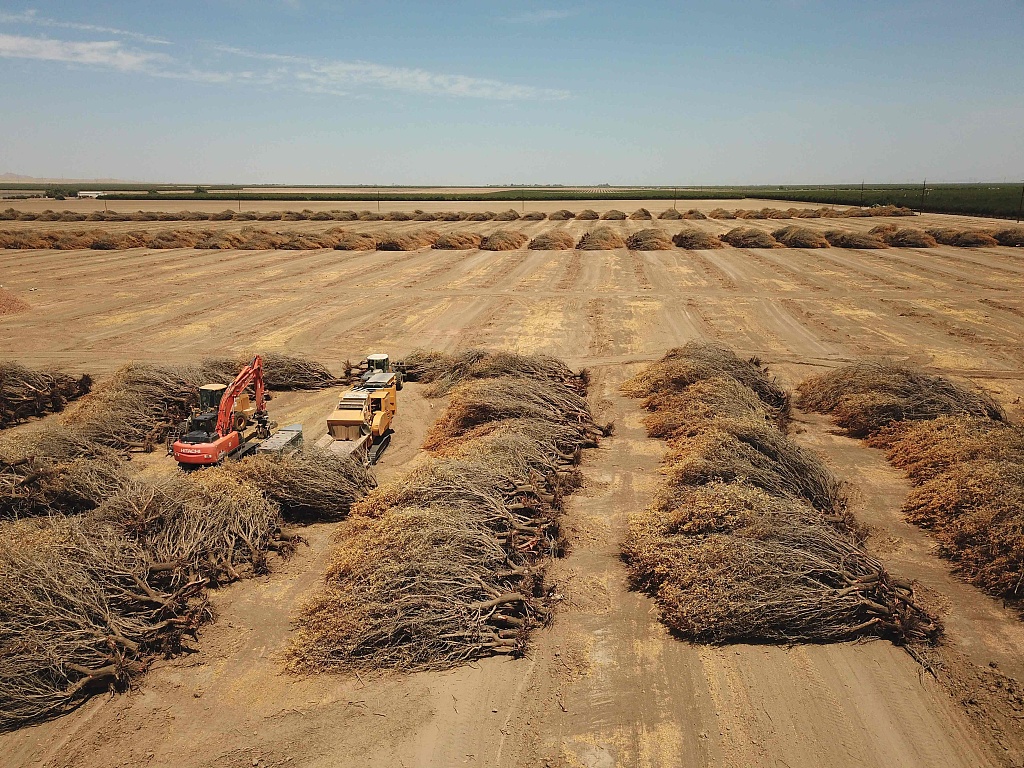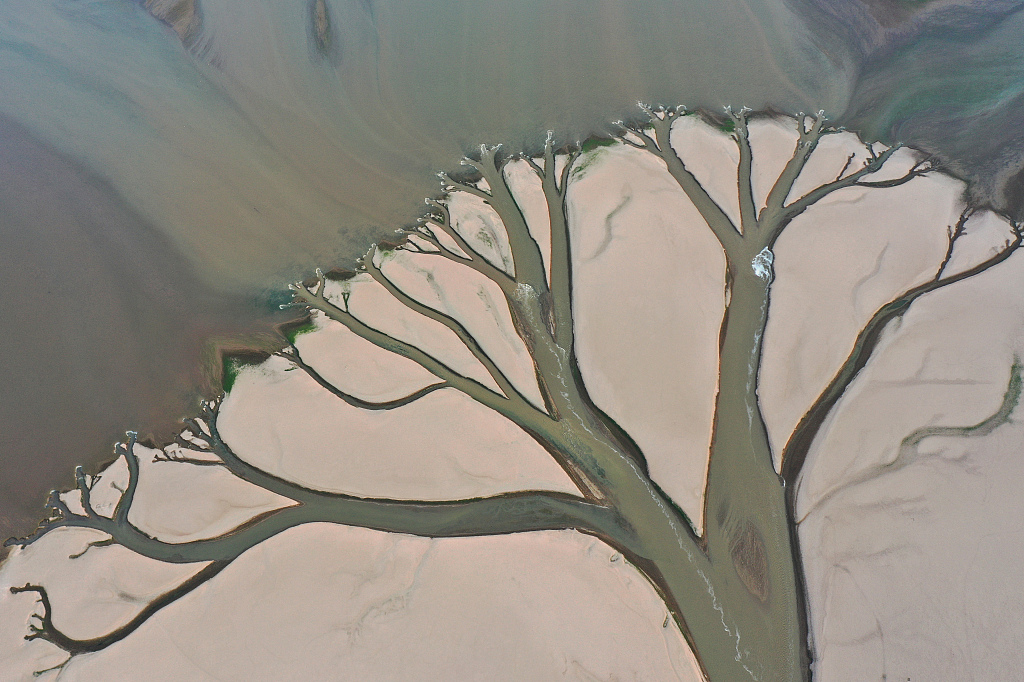From the U.S. to Europe to China, unprecedented droughts that are currently wreaking havoc in much of the Northern Hemisphere are making people suffer, threatening crop production and damaging the already vulnerable economic recovery due to the pandemic.
Europe is experiencing its worst drought in at least 500 years, with almost two-thirds of the continent in a state of alert or warning, a European Union (EU) agency said on Tuesday. The historic drought is propelling what experts predict a record year of wildfire destruction, as data from the European Forest Information System(Effis) shows that an area equivalent to one-fifth of Belgium has been ravaged by flames this year. Rivers across the continent are drying up, threatening cargo shipment. In Germany, factories may have to throttle production or halt it completely because plunging water levels on the Rhine River are making it harder to transport cargo.

An inland vessel navigates on the Rhine River as the partially dried-up river bed is seen in the foreground in Duesseldorf, western Germany, on July 25, 2022. /VCG
An inland vessel navigates on the Rhine River as the partially dried-up river bed is seen in the foreground in Duesseldorf, western Germany, on July 25, 2022. /VCG

Boats rest in the dried bed of Lake Velencei of Hungary on Aug. 17, 2022. Due to the unusual heat and drought, the water level of the lake stands at 55 centimeters, 8 centimeters down to the ever measured lowest level of 63 centimeters. /VCG
Boats rest in the dried bed of Lake Velencei of Hungary on Aug. 17, 2022. Due to the unusual heat and drought, the water level of the lake stands at 55 centimeters, 8 centimeters down to the ever measured lowest level of 63 centimeters. /VCG
The scenario across the Atlantic is pretty much the same. U.S. Drought Monitor, a map released every Thursday to show the location and intensity of drought across the country, puts vast areas of the Western, Southwestern and Central U.S. in dark red and bright red, representing exceptional drought and extreme drought. Around 50 percent of the country was experiencing some form of drought, and a combination of elevated temperatures and low precipitation means that more than half of the U.S. has seen these conditions for more than four weeks in a row, CNN reported in early August.

Dead almond trees lie in an open field after they were removed by a farmer due to the lack of water to irrigate them, in Huron, California, a town in the drought-stricken Central Valley, on July 23, 2021. /VCG
Dead almond trees lie in an open field after they were removed by a farmer due to the lack of water to irrigate them, in Huron, California, a town in the drought-stricken Central Valley, on July 23, 2021. /VCG

A sunken World War II-Era Higgins landing craft that used to be nearly 200 feet underwater has revealed near Lake Mead Marina as the waterline continued to lower on July 1, 2022 in Nevada, U.S.A. /VCG
A sunken World War II-Era Higgins landing craft that used to be nearly 200 feet underwater has revealed near Lake Mead Marina as the waterline continued to lower on July 1, 2022 in Nevada, U.S.A. /VCG
China is battling record-breaking droughts in its southern regions, too. Poyang Lake, China's largest freshwater lake, has been reduced to a quarter of its usual size due to less rainfall and high temperature, forcing people to dig trenches to keep water flowing to one of the country's key rice-growing regions. High temperatures have sparked mountain fires that have forced the evacuation of 1,500 people in the southwest, and factories have been ordered to cut production as hydroelectric plants reduce their output amid drought conditions. The extreme heat and drought have wilted crops and shrunk rivers including the giant Yangtze, disrupting cargo traffic.

Poyang Lake, China's largest freshwater lake, has reduced to a quarter of its usual size due to less rainfall and high temperature this year. /VCG
Poyang Lake, China's largest freshwater lake, has reduced to a quarter of its usual size due to less rainfall and high temperature this year. /VCG

A forest fire broke out near the urban areas of Chongqing in southwest China on August 21, 2022. /VCG
A forest fire broke out near the urban areas of Chongqing in southwest China on August 21, 2022. /VCG
Many experts and government officials have blamed climate change for the severity of this year's droughts. Scientists believe that warmer temperature enhances evaporation, which reduces surface water and dries out soils and vegetation. Meanwhile, warmer weather also increases the demand of water for both daily life and irrigation purposes.
Earlier this year, the UN warned in a report that the frequency and duration of droughts will continue to increase due to human-caused climate change, with water scarcity already affecting billions of people across the world. It estimates that roughly one third of the world's population – 2.3 billion people – is already facing water scarcity, with that number expected to double by 2050.
The UN environment agency warns that drought and desertification are quickly becoming the new normal everywhere – from the U.S. to Europe and Africa.
(All images via VCG, with input from AP and Reuters)
(If you want to contribute and have specific expertise, please contact us at nature@cgtn.com.)

